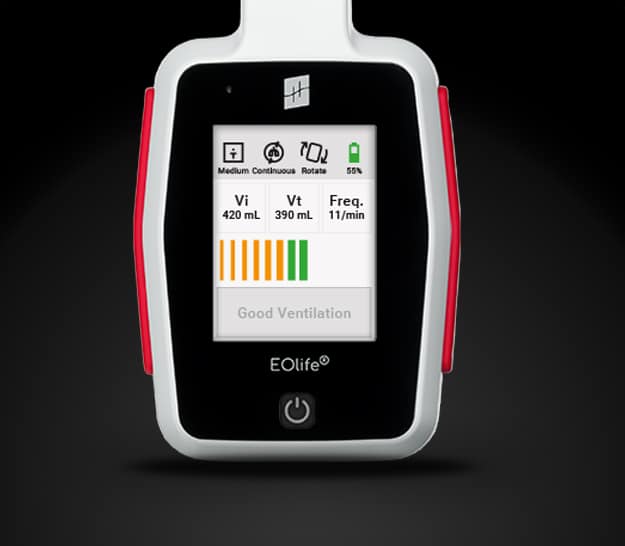For the last 20 years, the focus has been on the ‘cardio’ part of CPR, primarily chest compressions. While this is of critical importance, recent studies have shown that the quality of ventilation has a major impact on survival rates and neurological outcomes. In a study published in 2023, Idris et al. demonstrated in approximately 2000 patients that adequate ventilation through tidal volume has the potential to triple survival rates and quadruple the number of patients discharged from hospitals with good neurological outcomes.

In a 2023 study published in Circulation, Idris et al. investigated the ventilation practices of EMS teams during early CPR before advanced airway placement. Their goal was to assess the impact of bag-valve-mask ventilation on patient outcomes following Out-Of-Hospital Cardiac Arrest (OHCA).
The researchers retrospectively analyzed data from 1976 adult OHCA patients who received ventilation in a 30:2 compression-to-ventilation ratio. Patients were included from six different sites. The administered tidal volumes were assessed using bioimpedance measurements facilitated by defibrillators. This technique allowed the detection of ventilation waveforms corresponding to tidal volumes greater than 250mL.
The included patients were divided into two groups:
- Group 1: Patients who received proper ventilation (tidal volume > 250 mL) in less than half of the compression pauses (accounting for 60% of the cohort).
- Group 2: Patients who received proper ventilation (tidal volume > 250 mL) in more than half of the compression pauses (accounting for 40% of the cohort).
This study revealed several key findings:
Ventilation Adequacy:
A significant proportion (60%) of the patient cohort did not receive adequate ventilation, experiencing hypoventilation due to insufficient tidal volume.
Return Of Spontaneous Circulation (ROSC):
Patients in Group 2, who received adequate tidal volume, had a higher prehospital ROSC rate (40.7%) compared to patients in Group 1 (25.2%).
Survival Rate:
Patients in Group 2 experienced a 13.5% survival rate, whereas Group 1 had only 4.1% survival.
Neurological Outcomes:
Group 2 patients had a higher chance of favorable neurological outcomes (modified Rankin Scale score ≤ 3) at 10.6%, compared to 2.4% in Group 1.
Despite some limitations (secondary observational analysis), the study’s strengths include a large patient sample and a multicentric design. The results are concerning: the majority (60%) of patients experienced significant hypoventilation, whereas better levels of ventilation (tidal volume) resulted in significant improvements to survival rates and good neurological outcomes.
EOlife stands as a game changer in this context. It is currently the only available Ventilation Feedback Device (VFD) capable of estimating the tidal volume—the actual volume of gas reaching the patient’s lungs. It’s time to improve the quality of manual ventilation for patients experiencing OHCA and put the “P” back at the center of CPR with EOlife.

The ultimate medical device for high-performance manual ventilation.
Measure and adjust in real-time the quality of your manual ventilation. Medical device designed for the manual ventilation of adult patients in cardiopulmonary arrest.

The ultimate training tool for high-performance manual ventilation.
Record your training sessions. Analyze your ventilation cycles. Improve your manual ventilation practice.


